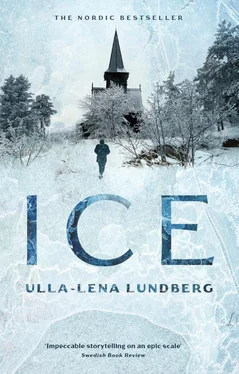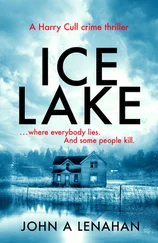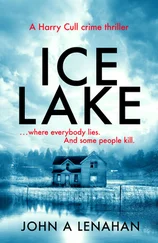The pilots, yes. As they worked out there, they had others toiling beside them in harmony, I know that. It must have been so, for I’ve had the experience myself, many times.
PEOPLE MIGHT WALK ON THEIR OWN LEGS right up to their death. But that’s the end of it. From then on they are a weight to be moved, lifted and carried. Be spoken of and talked about in their very presence, important decisions made. Doctors will examine the body and determine the cause of death—drowning and hypothermia. The authorities grant Doctor Gyllen, no, Midwife Irina Gyllen a dispensation to perform this duty, which eliminates a good deal of trouble and expense. The local policeman, Julius Friman, is present as witness and recording secretary. An easy procedure at the present temperature. The seaman still looks newly drowned, washed clean by the sea and odour free.
On the Örlands, the bodies of those newly dead are kept in a shed at their home farm until the burial. Traditionally, dead seamen are kept in the pastor’s boathouse. The Coast Guard brings the body, and it turns out there are trestles and planks stowed away in a corner for this very purpose. Pure good luck that the pastor never sawed them up for firewood. Österberg, the carpenter in the east villages, brings a smoothly planed coffin in his boat. The pastor’s wife lines it with white paper curtains from the war years that she’s found in the attic, and she contributes a pillowcase and pillow. The pastor and the verger heave the seaman into the coffin, staggering under his unexpected weight. They cover him with a paper shroud and the pastor reads The Lord’s Blessing. Together, he and the verger sing, “Now the labourer’s task is o’er; now the battle day is past; now upon the farther shore, lands the voyager at last.”
Then he lies there and waits for Sunday, because the pastor knows that many people are interested in this burial service and Sunday will give them a respectable reason to be present. It seems right, too, that this man who died alone in a howling gale should thus be embraced by a large parish community.
While they wait, the verger struggles to dig a grave in the cold, rocky soil. He gets help from the church crofter, for pay, and from the pastor when he has time between phone calls. There is much to be discussed and organized. The man’s wallet is sent to the U.S. Embassy, and he is identified as Eric Alexander Cain, from Brooklyn. A Swedish-speaking official at the Embassy calls and there is a vigorous discussion of the arrangements. The dead man was a Baptist, but the Baptists and the Lutherans are close, and a traditional Örland burial will not be a problem. Whirr, he rings off, and then in the afternoon he calls again. He has spoken to the Baptist Church in Helsingfors, but it’s a long way for the Baptist minister to come, so he has no objection to Pastor Kummel, assuming the pastor is willing? “Yes,” Petter promises for the second time, and whirr, they ring off. The next day the fellow calls again to talk about the expenses, and the pastor answers that the parish itself pays the very modest expenses for the burial of a stranger. He reports that the man is already in his coffin and what the coffin cost, and the official says that of course the Embassy will pay for all costs verified by an invoice. Petter thanks him, and, whirr, they ring off. Ring ring, he calls back to discuss a possible floral tribute. Petter explains that flowers have to be sent out from Åbo and won’t survive the long trip from Mellom to the Örlands in an open boat. What they can do, and his wife has already started, is to make wreaths of juniper greens. There are frozen, dark blue juniper berries in the greens, and to give the wreaths some colour, she picks sprigs of red rosehips and uses them as decoration. “Beautiful and dignified,” Petter assures the Embassy functionary, and the man sounds impressed but also distant, as if he were talking to an Eskimo. “That will be excellent,” he says, and promises to arrange for a spruce wreath with a ribbon from the Embassy to be sent out on Thursday’s boat from Åbo. “Thank you,” Petter says. Whirr.
And on Friday morning, Post-Anton arrives weighed down by an enormous wreath of spruce and red paper flowers, plus a ribbon with gold lettering, a little American flag, and a large rosette in red, white, and blue adorned with an American bald eagle. Mona’s wreaths from Örland parish are smaller, but together they make an attractive arrangement on the coffin and later on the grave. The men of the vestry carry the casket up from the boathouse and set it down on the coffin stone outside the churchyard gate, as tradition dictates. The bells ring, and the congregation sings the departed to his grave. The pastor performs the burial service. In the biting wind, freezing temperatures and icing in the bays, he says a few words about the seaman from the vast land of America who met his death in the cold north. Alone, a stranger, but now reunited with the worldwide community of Christians. His body sinks into the cold earth, but his spirit rests by the heart of Jesus.
And that’s the end of Eric Alexander Cain and his story, or so they think. But a month later there arrives a pretty blue airmail letter from the U.S. Embassy addressed to the Rev. Peter Kummel. When he opens the envelope, twenty-five dollars fall out. The pastor can see that the letter was written by a Mrs Inez Cain, the mother of Eric Alexander, but he has never studied English, just Finnish and German and a little French and Latin, plus Ancient Greek and Hebrew, and he has to ask his father for help with the translation. Papa is in his glory, and the translation comes back at once. The letter is well-written and expressive. Mrs Cain thanks Pastor Kummel for giving her son a Christian burial. It would give her comfort in her great grief if he could tell her something about the funeral and the grave itself. She is enclosing twenty-five dollars for its beautification, which she hopes he can use for that purpose.
The pastor is ashamed. Dreadfully ashamed, for two reasons. First, because he did not himself write a short letter to tell her about her son’s funeral and the churchyard where he lies. And second, even more shameful, because he unconsciously assumed that the seaman came from a background where his people slaved on cotton plantations and could neither read nor write. How could he be so thoughtless, so prejudiced? What reason does this woman with the lovely handwriting and the friendly message have to believe that he will put her cash gift to proper use?
Now the letter goes quickly back to father Leonard, who is given detailed instructions about what to write. 1) A warm thank you for her kind letter. 2) The deepest sympathy for her son’s tragic and untimely death. 3) A description of the funeral and burial. 4) An assurance that the pastor’s wife herself will see that flowers are planted on the grave the following spring, together with their thanks for the monetary contribution, which will be used for a cross with engraved nameplate. 5) A final word about Jesus’s promises, which conquer death.
If he believes for a moment that Papa will follow his instructions, he is quickly disabused of his error. Petter has at least had the foresight to have the letter returned to him for his signature, which has kept his father from immediately mailing it off to America, beaming. What his father returns to him is a terribly long, tightly written letter. Even without knowing English, it is easy to see that Petter’s instructions have not been followed. Papa begins by writing four pages about Negro slavery, which he opposes. Then he writes three pages about his own difficult years as an immigrant in America. Next, he writes about the weather in this part of the world, which has given him rheumatism, destroyed his nerves, and brought the life of Mrs Cain’s son to an end. On the last page, when he has tired of writing, he has scraped together a few lines about the funeral, the plantings, and Christian hope.
Читать дальше












